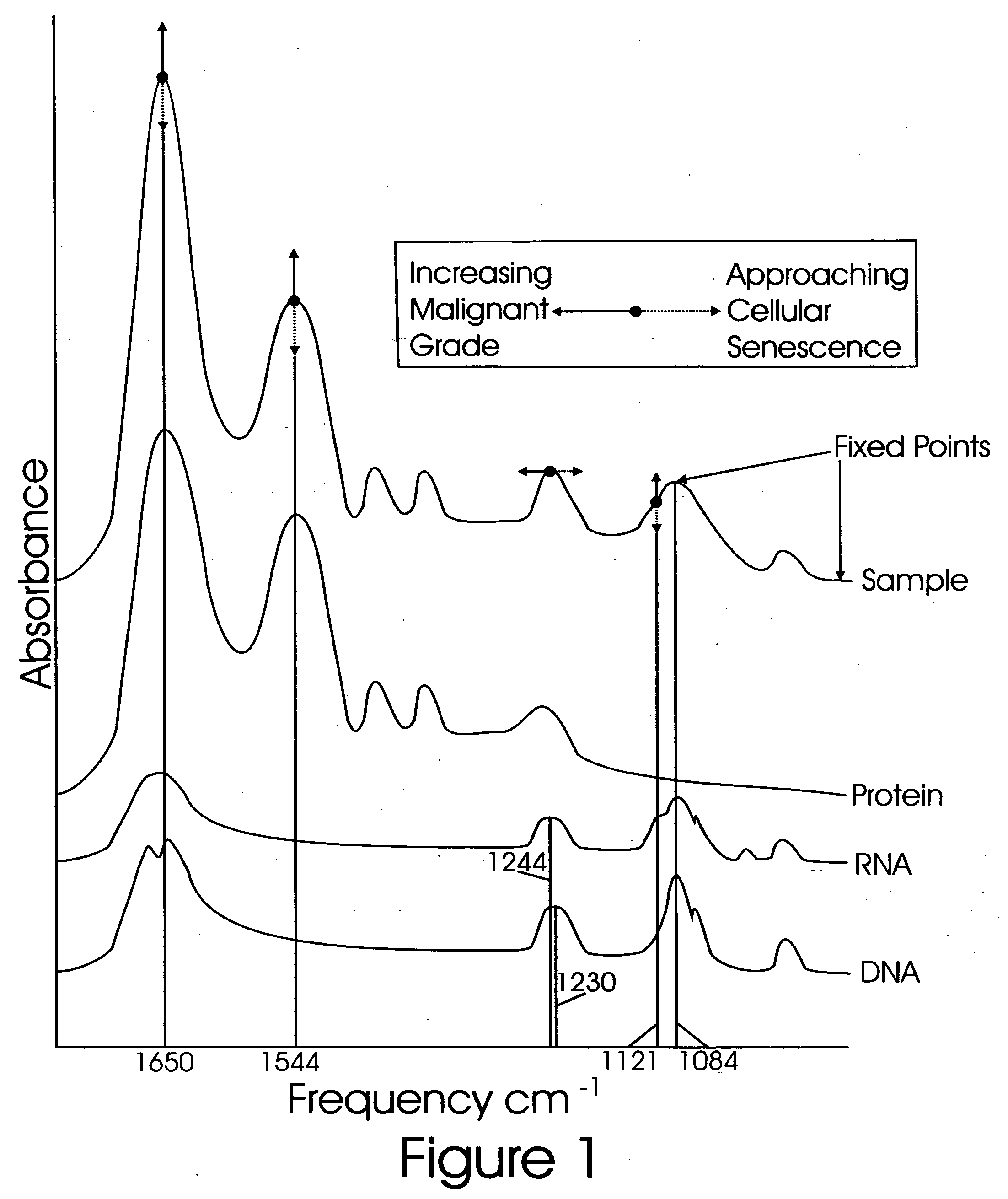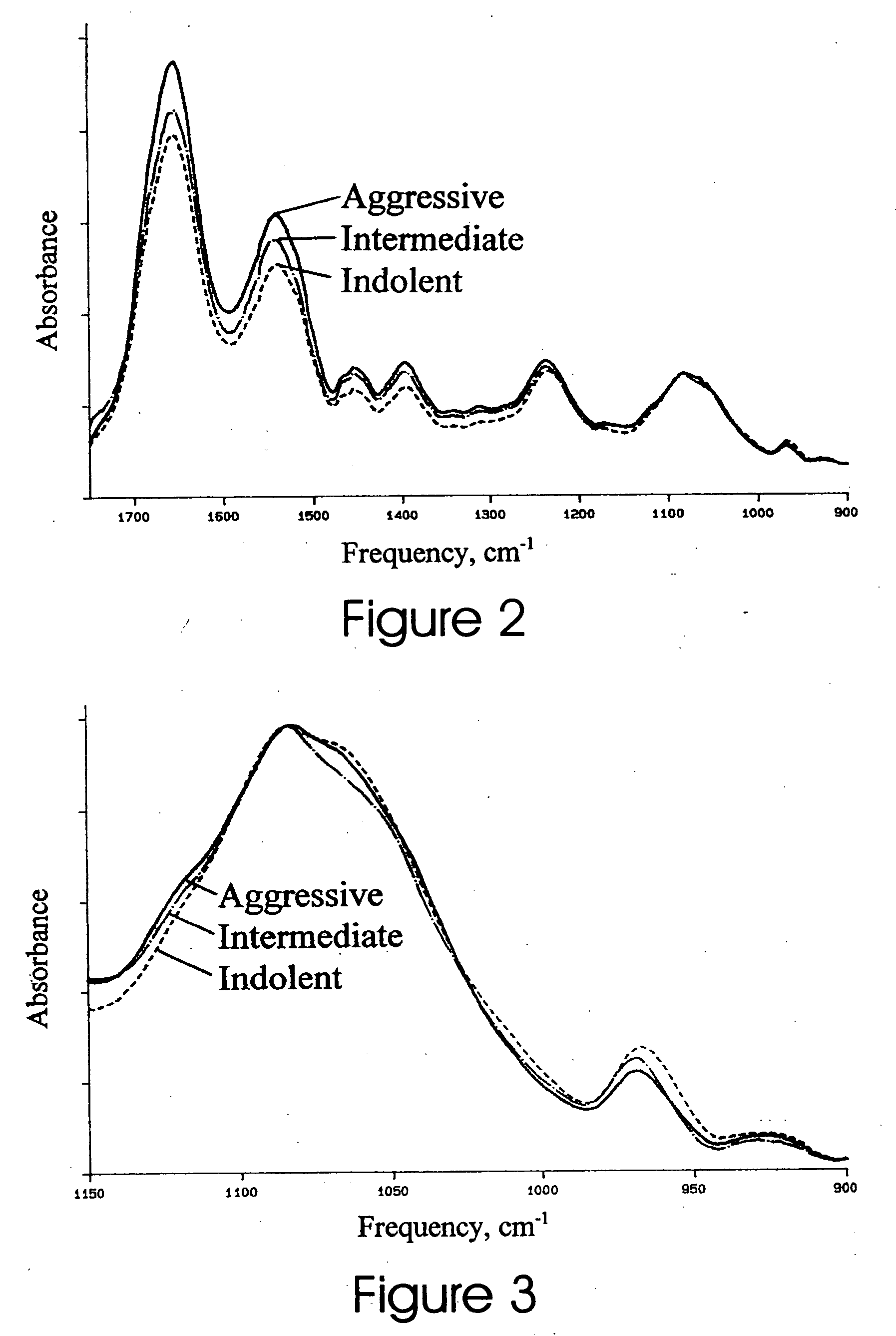Method of grading disease by Fourier Transform Infrared Spectroscopy
a fourier transform and infrared spectroscopy technology, applied in the field of grading disease by fourier transform infrared spectroscopy, can solve the problems of poor signal to noise ratio for rna related changes at 1121 cm, rendering rna/dna ratio analysis less reliable, and many tissues/cells are glycogen-poor,
- Summary
- Abstract
- Description
- Claims
- Application Information
AI Technical Summary
Benefits of technology
Problems solved by technology
Method used
Image
Examples
Embodiment Construction
[0018] An infrared spectrum in the frequency range 900 cm−1-1750 cm−1 is obtained from the unknown sample of cells. The methods of FTIR microspectroscopy are well developed and described elsewhere.
[0019] A reference spectrum for pure RNA and pure DNA (10) are obtained and stored in digital memory.
[0020] The symmetric phosphodiester stretching band centered at 1084 cm−1 is the result of absorbance by RNA and DNA with minimal contribution by protein. Spectra in the frequency range 900 cm−1-1160 cm−1 for the unknown sample, reference RNA, and reference DNA are compared at one or more wavenumbers where RNA and DNA most differ such as 1121 cm−1. By normalising all three spectra by max-min at 1084 cm−1 and 1160 cm−1, the sample spectral absorbance at 1121 cm−1 will lie below that of RNA and above that of DNA. The relative distance of the sample absorbance from that of each of the pure nucleic acids at 1121 cm−1 varies inversely with their relative contributions to the sample spectrum. F...
PUM
| Property | Measurement | Unit |
|---|---|---|
| Fourier Transform Infrared Spectroscopy | aaaaa | aaaaa |
| infrared absorbance spectrum | aaaaa | aaaaa |
| spectrum | aaaaa | aaaaa |
Abstract
Description
Claims
Application Information
 Login to View More
Login to View More - R&D
- Intellectual Property
- Life Sciences
- Materials
- Tech Scout
- Unparalleled Data Quality
- Higher Quality Content
- 60% Fewer Hallucinations
Browse by: Latest US Patents, China's latest patents, Technical Efficacy Thesaurus, Application Domain, Technology Topic, Popular Technical Reports.
© 2025 PatSnap. All rights reserved.Legal|Privacy policy|Modern Slavery Act Transparency Statement|Sitemap|About US| Contact US: help@patsnap.com



